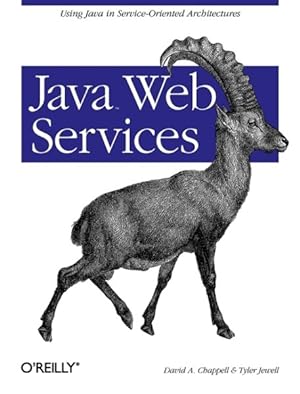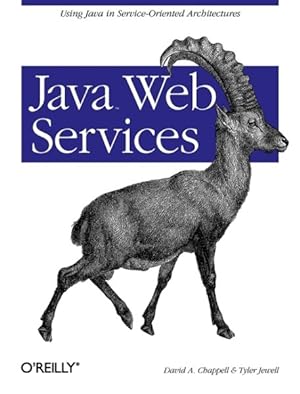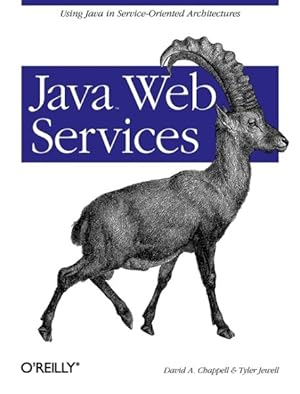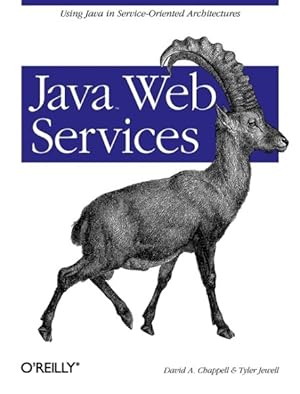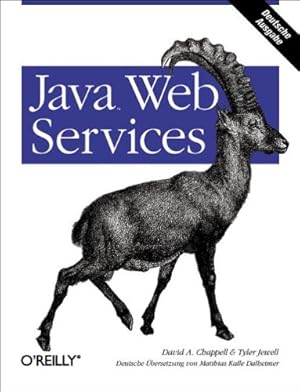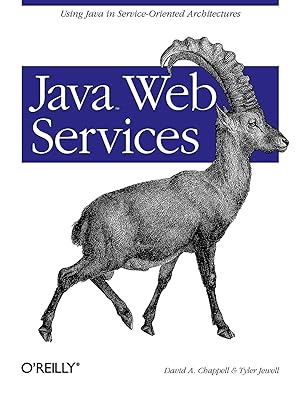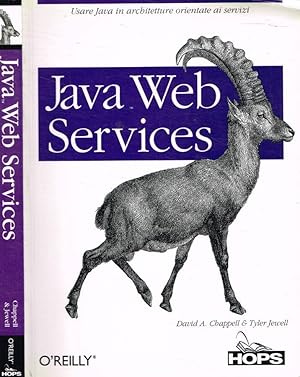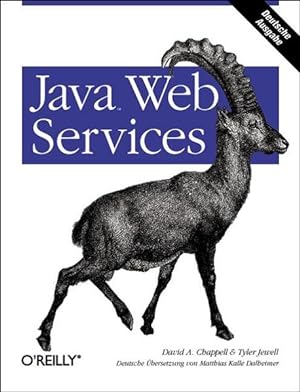CHAPPELL, DAVID A; JEWELL, TYLER (26 risultati)
Filtri di ricerca
Tipo di articolo
- Tutti i tipi di prodotto
- Libri (26)
- Riviste e Giornali (Nessun altro risultato corrispondente a questo perfezionamento)
- Fumetti (Nessun altro risultato corrispondente a questo perfezionamento)
- Spartiti (Nessun altro risultato corrispondente a questo perfezionamento)
- Arte, Stampe e Poster (Nessun altro risultato corrispondente a questo perfezionamento)
- Fotografie (Nessun altro risultato corrispondente a questo perfezionamento)
- Mappe (Nessun altro risultato corrispondente a questo perfezionamento)
- Manoscritti e Collezionismo cartaceo (Nessun altro risultato corrispondente a questo perfezionamento)
Condizioni Maggiori informazioni
- Nuovo (14)
- Come nuovo, Ottimo o Quasi ottimo (3)
- Molto buono o Buono (9)
- Discreto o Mediocre (Nessun altro risultato corrispondente a questo perfezionamento)
- Come descritto (Nessun altro risultato corrispondente a questo perfezionamento)
Legatura
- Tutte
- Rilegato (Nessun altro risultato corrispondente a questo perfezionamento)
- Brossura (26)
Ulteriori caratteristiche
- Prima ed. (4)
- Copia autograf. (Nessun altro risultato corrispondente a questo perfezionamento)
- Sovracoperta (Nessun altro risultato corrispondente a questo perfezionamento)
- Con foto (12)
- Non Print on Demand (25)
Lingua (3)
Spedizione gratuita
Paese del venditore
Valutazione venditore
-
Condizione: Very Good. Very Good condition. A copy that may have a few cosmetic defects. May also contain light spine creasing or a few markings such as an owner's name, short gifter's inscription or light stamp.
-
Condizione: Good. Good condition. A copy that has been read but remains intact. May contain markings such as bookplates, stamps, limited notes and highlighting, or a few light stains. Bundled media such as CDs, DVDs, floppy disks or access codes may not be included.
-
Java Web Services: Using Java in Service-Oriented Architectures
Da: Half Price Books Inc., Dallas, TX, U.S.A.
paperback. Condizione: Very Good. Connecting readers with great books since 1972! Used books may not include companion materials, and may have some shelf wear or limited writing. We ship orders daily and Customer Service is our top priority!
-
Paperback. Condizione: Good. No Jacket. Pages can have notes/highlighting. Spine may show signs of wear. ~ ThriftBooks: Read More, Spend Less.
-
paperback. Condizione: Very Good. Connecting readers with great books since 1972! Used books may not include companion materials, and may have some shelf wear or limited writing. We ship orders daily and Customer Service is our top priority!
-
Java Web Services : Using Java in Service-Oriented Architectures
Editore: O'Reilly Media, Incorporated, 2002
ISBN 10: 0596002696 ISBN 13: 9780596002695
Lingua: Inglese
Da: Better World Books: West, Reno, NV, U.S.A.
Condizione: Good. Used book that is in clean, average condition without any missing pages.
-
Java Web Services
Editore: O'Reilly Media, United States, Sebastopol, 2002
ISBN 10: 0596002696 ISBN 13: 9780596002695
Lingua: Inglese
Da: WorldofBooks, Goring-By-Sea, WS, Regno Unito
EUR 4,95
EUR 6,37 per la spedizione da Regno Unito a U.S.A.QuantitÓ: 3 disponibili
Aggiungi al carrelloPaperback. Condizione: Very Good. For many Java developers, web services appeared to come out of nowhere. Its advantages are clear: web services are platform-independent (like Java itself), language-agnostic (a clear advantage over Java RMI), can easily be tunneled through firewalls (an obvious benefit to anyone who has dealt with modern enterprise networks), object-oriented (we all know about that), and tends to be loosely coupled (allowing more flexible application development). But these advantages have been obscured by a cloud of hype and a proliferation of jargon that are difficult to penetrate. What are SOAP, UDDI, WSDL, and JAXM? To say nothing of JAXR, tModels, category bags, WSFL, and other friends? And assuming that you understand what they are, how do you do anything with them? Do they live up to their promises? Are they really the future of network computing, or a dead end? Java Web Services gives the experienced Java developer a way into the Web Services world. It helps you to understand what's going on, what the technologies mean and how they relate, and shows Java developers how to put them to use to solve real problems. You'll learn what's real and what isn't; what the technologies are really supposed to do, and how they do it. Java Web Services shows you how to use SOAP to perform remote method calls and message passing; how to use WSDL to describe the interface to a web service or understand the interface of someone else's service; and how to use UDDI to advertise (publish) and look up services in each local or global registry. Java Web Services also discusses security issues, interoperability issues, integration with other Java enterprise technologies like EJB; the work being done on the JAXM and JAX-RPC packages, and integration with Microsoft's .NET services. The web services picture is still taking shape; there are many platforms and APIs to consider, and many conflicting claims from different marketing groups. And although web services are inherently language-independent, the fit between the fundamental principles on which Java and web services are based means that Java will almost certainly be the predominant language for web services development. If you're a Java developer and want to climb on the web services bandwagon, or if you only want to "kick the tires" and find out what web services has to offer, you will find this book indispensable. The book has been read, but is in excellent condition. Pages are intact and not marred by notes or highlighting. The spine remains undamaged.
-
Java Web Services: Using Java in Service-Oriented Architectures [Paperback] David A. Chappell and Tyler Jewell
Da: GridFreed, North Las Vegas, NV, U.S.A.
Paperback. Condizione: New. In shrink wrap.
-
Condizione: New.
-
Java Web Services: Using Java in Service-Oriented Architectures
Da: Lucky's Textbooks, Dallas, TX, U.S.A.
Condizione: New.
-
EUR 40,95
Gratis per la spedizione da Regno Unito a U.S.A.QuantitÓ: 2 disponibili
Aggiungi al carrelloPaperback. Condizione: New. 1st. For many Java developers, web services appeared to come out of nowhere. Its advantages are clear: web services are platform-independent (like Java itself), language-agnostic (a clear advantage over Java RMI), can easily be tunneled through firewalls (an obvious benefit to anyone who has dealt with modern enterprise networks), object-oriented (we all know about that), and tends to be loosely coupled (allowing more flexible application development). But these advantages have been obscured by a cloud of hype and a proliferation of jargon that are difficult to penetrate. What are SOAP, UDDI, WSDL, and JAXM? To say nothing of JAXR, tModels, category bags, WSFL, and other friends? And assuming that you understand what they are, how do you do anything with them? Do they live up to their promises? Are they really the future of network computing, or a dead end? Java Web Services gives the experienced Java developer a way into the Web Services world. It helps you to understand what's going on, what the technologies mean and how they relate, and shows Java developers how to put them to use to solve real problems.You'll learn what's real and what isn't; what the technologies are really supposed to do, and how they do it. Java Web Services shows you how to use SOAP to perform remote method calls and message passing; how to use WSDL to describe the interface to a web service or understand the interface of someone else's service; and how to use UDDI to advertise (publish) and look up services in each local or global registry. Java Web Services also discusses security issues, interoperability issues, integration with other Java enterprise technologies like EJB; the work being done on the JAXM and JAX-RPC packages, and integration with Microsoft's .NET services. The web services picture is still taking shape; there are many platforms and APIs to consider, and many conflicting claims from different marketing groups. And although web services are inherently language-independent, the fit between the fundamental principles on which Java and web services are based means that Java will almost certainly be the predominant language for web services development.If you're a Java developer and want to climb on the web services bandwagon, or if you only want to "kick the tires" and find out what web services has to offer, you will find this book indispensable.
-
Paperback. Condizione: New. 1st. For many Java developers, web services appeared to come out of nowhere. Its advantages are clear: web services are platform-independent (like Java itself), language-agnostic (a clear advantage over Java RMI), can easily be tunneled through firewalls (an obvious benefit to anyone who has dealt with modern enterprise networks), object-oriented (we all know about that), and tends to be loosely coupled (allowing more flexible application development). But these advantages have been obscured by a cloud of hype and a proliferation of jargon that are difficult to penetrate. What are SOAP, UDDI, WSDL, and JAXM? To say nothing of JAXR, tModels, category bags, WSFL, and other friends? And assuming that you understand what they are, how do you do anything with them? Do they live up to their promises? Are they really the future of network computing, or a dead end? Java Web Services gives the experienced Java developer a way into the Web Services world. It helps you to understand what's going on, what the technologies mean and how they relate, and shows Java developers how to put them to use to solve real problems.You'll learn what's real and what isn't; what the technologies are really supposed to do, and how they do it. Java Web Services shows you how to use SOAP to perform remote method calls and message passing; how to use WSDL to describe the interface to a web service or understand the interface of someone else's service; and how to use UDDI to advertise (publish) and look up services in each local or global registry. Java Web Services also discusses security issues, interoperability issues, integration with other Java enterprise technologies like EJB; the work being done on the JAXM and JAX-RPC packages, and integration with Microsoft's .NET services. The web services picture is still taking shape; there are many platforms and APIs to consider, and many conflicting claims from different marketing groups. And although web services are inherently language-independent, the fit between the fundamental principles on which Java and web services are based means that Java will almost certainly be the predominant language for web services development.If you're a Java developer and want to climb on the web services bandwagon, or if you only want to "kick the tires" and find out what web services has to offer, you will find this book indispensable.
-
Condizione: As New. Unread book in perfect condition.
-
EUR 35,77
EUR 17,62 per la spedizione da Regno Unito a U.S.A.QuantitÓ: 3 disponibili
Aggiungi al carrelloPaperback. Condizione: New.
-
EUR 40,43
EUR 17,06 per la spedizione da Regno Unito a U.S.A.QuantitÓ: 3 disponibili
Aggiungi al carrelloCondizione: New.
-
EUR 40,43
EUR 17,06 per la spedizione da Regno Unito a U.S.A.QuantitÓ: 3 disponibili
Aggiungi al carrelloCondizione: As New. Unread book in perfect condition.
-
EUR 8,40
EUR 24,00 per la spedizione da Germania a U.S.A.QuantitÓ: 1 disponibili
Aggiungi al carrelloCondizione: Sehr gut. Auflage: 1. ex Library Book aus einer wissenschafltichen Bibliothek Sprache: Deutsch Gewicht in Gramm: 969 22,8 x 17,4 x 1,6 cm, Broschiert.
-
EUR 45,69
EUR 10,50 per la spedizione da Irlanda a U.S.A.QuantitÓ: 1 disponibili
Aggiungi al carrelloCondizione: New. This volume offers the experienced Java developer a way into the Web Services world. It aims to help explain what's going on, what the technologies mean and how they relate, and shows Java developers how to put them to use to solve real problems. Num Pages: 278 pages, 1, black & white illustrations. BIC Classification: UMW. Category: (P) Professional & Vocational; (UP) Postgraduate, Research & Scholarly; (UU) Undergraduate. Dimension: 234 x 177 x 16. Weight in Grams: 464. . 2002. Illustrated. Paperback. . . . .
-
Condizione: New. This volume offers the experienced Java developer a way into the Web Services world. It aims to help explain what's going on, what the technologies mean and how they relate, and shows Java developers how to put them to use to solve real problems. Num Pages: 278 pages, 1, black & white illustrations. BIC Classification: UMW. Category: (P) Professional & Vocational; (UP) Postgraduate, Research & Scholarly; (UU) Undergraduate. Dimension: 234 x 177 x 16. Weight in Grams: 464. . 2002. Illustrated. Paperback. . . . . Books ship from the US and Ireland.
-
EUR 56,32
EUR 11,38 per la spedizione da Regno Unito a U.S.A.QuantitÓ: 2 disponibili
Aggiungi al carrelloPaperback. Condizione: Brand New. 1st edition. 276 pages. 8.75x6.75x0.75 inches. In Stock.
-
EUR 44,36
EUR 43,40 per la spedizione in U.S.A.QuantitÓ: Pi¨ di 20 disponibili
Aggiungi al carrelloPaperback. Condizione: New. 1st. For many Java developers, web services appeared to come out of nowhere. Its advantages are clear: web services are platform-independent (like Java itself), language-agnostic (a clear advantage over Java RMI), can easily be tunneled through firewalls (an obvious benefit to anyone who has dealt with modern enterprise networks), object-oriented (we all know about that), and tends to be loosely coupled (allowing more flexible application development). But these advantages have been obscured by a cloud of hype and a proliferation of jargon that are difficult to penetrate. What are SOAP, UDDI, WSDL, and JAXM? To say nothing of JAXR, tModels, category bags, WSFL, and other friends? And assuming that you understand what they are, how do you do anything with them? Do they live up to their promises? Are they really the future of network computing, or a dead end? Java Web Services gives the experienced Java developer a way into the Web Services world. It helps you to understand what's going on, what the technologies mean and how they relate, and shows Java developers how to put them to use to solve real problems.You'll learn what's real and what isn't; what the technologies are really supposed to do, and how they do it. Java Web Services shows you how to use SOAP to perform remote method calls and message passing; how to use WSDL to describe the interface to a web service or understand the interface of someone else's service; and how to use UDDI to advertise (publish) and look up services in each local or global registry. Java Web Services also discusses security issues, interoperability issues, integration with other Java enterprise technologies like EJB; the work being done on the JAXM and JAX-RPC packages, and integration with Microsoft's .NET services. The web services picture is still taking shape; there are many platforms and APIs to consider, and many conflicting claims from different marketing groups. And although web services are inherently language-independent, the fit between the fundamental principles on which Java and web services are based means that Java will almost certainly be the predominant language for web services development.If you're a Java developer and want to climb on the web services bandwagon, or if you only want to "kick the tires" and find out what web services has to offer, you will find this book indispensable.
-
EUR 47,01
EUR 48,99 per la spedizione da Germania a U.S.A.QuantitÓ: Pi¨ di 20 disponibili
Aggiungi al carrelloCondizione: New. This volume offers the experienced Java developer a way into the Web Services world. It aims to help explain what s going on, what the technologies mean and how they relate, and shows Java developers how to put them to use to solve real problems.For man.
-
EUR 38,49
EUR 73,95 per la spedizione da Regno Unito a U.S.A.QuantitÓ: 2 disponibili
Aggiungi al carrelloPaperback. Condizione: New. 1st. For many Java developers, web services appeared to come out of nowhere. Its advantages are clear: web services are platform-independent (like Java itself), language-agnostic (a clear advantage over Java RMI), can easily be tunneled through firewalls (an obvious benefit to anyone who has dealt with modern enterprise networks), object-oriented (we all know about that), and tends to be loosely coupled (allowing more flexible application development). But these advantages have been obscured by a cloud of hype and a proliferation of jargon that are difficult to penetrate. What are SOAP, UDDI, WSDL, and JAXM? To say nothing of JAXR, tModels, category bags, WSFL, and other friends? And assuming that you understand what they are, how do you do anything with them? Do they live up to their promises? Are they really the future of network computing, or a dead end? Java Web Services gives the experienced Java developer a way into the Web Services world. It helps you to understand what's going on, what the technologies mean and how they relate, and shows Java developers how to put them to use to solve real problems.You'll learn what's real and what isn't; what the technologies are really supposed to do, and how they do it. Java Web Services shows you how to use SOAP to perform remote method calls and message passing; how to use WSDL to describe the interface to a web service or understand the interface of someone else's service; and how to use UDDI to advertise (publish) and look up services in each local or global registry. Java Web Services also discusses security issues, interoperability issues, integration with other Java enterprise technologies like EJB; the work being done on the JAXM and JAX-RPC packages, and integration with Microsoft's .NET services. The web services picture is still taking shape; there are many platforms and APIs to consider, and many conflicting claims from different marketing groups. And although web services are inherently language-independent, the fit between the fundamental principles on which Java and web services are based means that Java will almost certainly be the predominant language for web services development.If you're a Java developer and want to climb on the web services bandwagon, or if you only want to "kick the tires" and find out what web services has to offer, you will find this book indispensable.
-
Affare
EUR 9,60
EUR 42,00 per la spedizione da Italia a U.S.A.QuantitÓ: 1 disponibili
Aggiungi al carrelloCondizione: BUONO USATO. Hops-Tecnologie ITALIANO IL LIBRO ╚ USATO, PERTANTO POTREBBE PRESENTARE LIEVI DIFETTI/IMPERFEZIONI. LA FOTO CORRISPONDE AL LIBRO IN VENDITA. Piega all'angolo superiore del piatto ant.della copertina e delle prime carte. "Java web services" consente allo sviluppatore Java di entrare nel mondo del Web Services. Il libro tratta come: usare SOAP per effetuare chiamate a metodi e message passing; usare WSDL per descrivere l'interfaccia a un servizio o comprendere le modalitÓ d'uso di un servizio esterno; utilizzare UDDI per pubblicare e consultare servizi presenti in ciascun registry locale e globale. Vengono trattate le problematiche di sicurezza e interoperabilitÓ con altre tecnologie come EJB e JMS, il lavoro in corso sui package JAM e JAX-RPC e l'interfacciamento con i servizi .NET di Microsoft. Traduttore: Piriou, G. Curatore: Bigatti, M. Numero pagine XII-287. Il copyright dei dati Ŕ di Informazioni Editoriali I.E. Srl.
-
Java Web Services
Editore: O'Reilly Verlag GmbH & Co. KG, 2003
ISBN 10: 3897212846 ISBN 13: 9783897212848
Lingua: Tedesco
Da: Gerald Wollermann, Bad Vilbel, Germania
EUR 7,96
EUR 45,00 per la spedizione da Germania a U.S.A.QuantitÓ: 1 disponibili
Aggiungi al carrelloTaschenbuch. Condizione: Gut. 1. 304 Seiten Gebrauchsspuren. Innerhalb Deutschlands Versand je nach Gr÷▀e/Gewicht als Gro▀brief bzw. BŘcher- und Warensendung mit der Post oder per DHL. Rechnung mit MwSt.-Ausweis liegt jeder Lieferung bei. Sprache: Deutsch Gewicht in Gramm: 599.
-
Java Web Services
Da: Revaluation Books, Exeter, Regno Unito
EUR 43,45
EUR 11,38 per la spedizione da Regno Unito a U.S.A.QuantitÓ: 2 disponibili
Aggiungi al carrelloPaperback. Condizione: Brand New. 1st edition. 276 pages. 8.75x6.75x0.75 inches. In Stock. This item is printed on demand.



